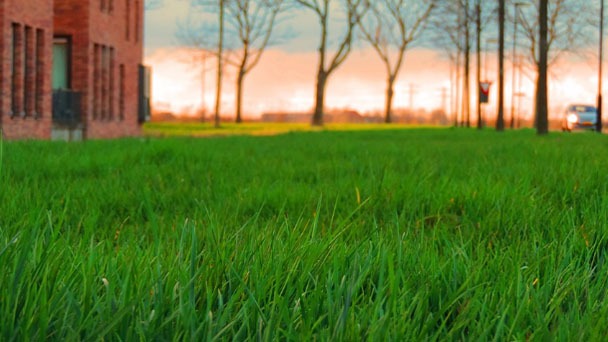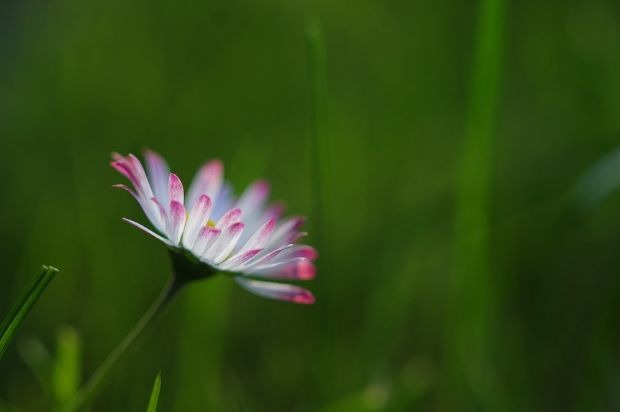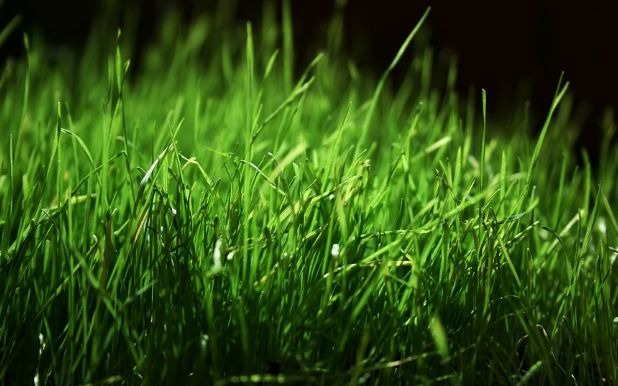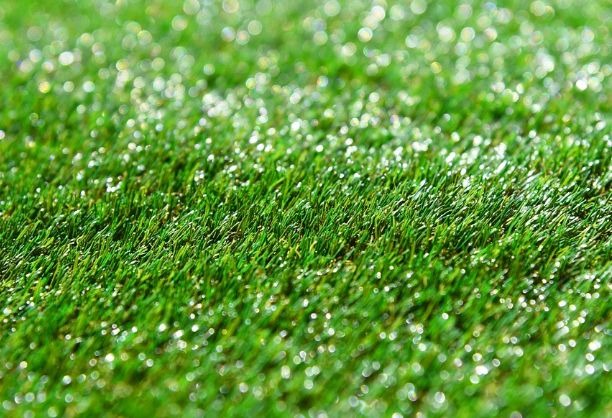How to Overseed Your Lawn in Spring - 2023 Guide
Written by Ivy
Jan 07 2023

If your lawn isn't living up to your expectations, overseeding it can help it recover and grow back healthier and more attractive. While late summer to early fall is the ideal time to overseed an existing lawn, spring overseeding can still be effective.
Quick Steps:
- Mow Grass on a Low Setting
- Fix Existing Lawn Issues
- Pick the Right Grass Seed
- Amend The Soil
- Apply Grass Seed
- Fertilize & Water the Lawn
What is Overseeding?
A way to help thin, struggling lawns grow thicker and healthier is to overseed them. The fundamental method of overseeding involves spreading fresh seed over an existing lawn without mowing it down or turning the soil. When done correctly, it can be just the thing you need to revive a dying lawn, and it's also one of the quickest and least expensive ways to make your lawn look better. The simplest way to overseed is with a handheld broadcast spreader, but almost as effective and efficient is using a slit-seeder, also known as a drop seeder.
Overseeding generally works well on lawns with a lot of weed growth. Without the use of chemical treatments or herbicides, adding grass seed can help deprive troublesome weeds of their food supply, choking them out and leaving your lawn weed-free. Overseeding can also help thin, patchy lawns. By replacing old, weak grass with new, strong sprouts, seeding your lawn will help fill in bare spots and revitalize existing areas.
When is the Best Time to Overseed a Lawn
With germination taking 7 to 21 days under ideal conditions, spring and fall are the best times to overseed an existing lawn. For grass seed germination to occur, the average daily temperature must be higher than 13°C.
Choosing the Right Lawn Seed
Selecting the appropriate seed is crucial when overseeding. Try to identify the types of grass that are already present in your lawn first. The purpose for which the lawn is used, the garden's aspect, whether or not the soil drains well, and the aesthetic you want to achieve must all be taken into account.
Select a seed mix containing perennial ryegrass, such as Medallion Premium Lawn Seed, which is the same mix used to grow our award-winning Medallion turf, for a lawn that will be more wear-resistant. It is a combination of some of the most cutting-edge cultivars for excellent appearance and durability, making it perfect for use in most gardens and ideal for overseeding an existing Medallion lawn. It has outstanding year-round color and both fine and medium-sized leaves that will grow quickly.
A pure fescue blend might be better suited for ornamental lawns or shady, drier areas because it will introduce grasses that can withstand drought and shade and have fine-bladed leaves that are a deep shade of green. If you want to add finer grasses to a ryegrass, utility lawn, this type of seed mixture is also perfect.
For various parts of your garden or even the same lawn, you might need to choose a different seed mixture. For instance, a fescue blend for your front lawn and a ryegrass blend for your back garden and shady area of your lawn will benefit from having a higher proportion of fescues in the mix.

How to Overseed Your Lawn
1. Mow Grass on a Low Setting
Give your lawn a nice, low cut before overseeding it. You want to go shorter than you normally would, but be careful not to mow it so short that it burns. Instead of using a mulcher, use a bag, and after you're done, rake the lawn to get rid of any leftover grass clippings and debris. The new seeds will have easier access to the soil thanks to a tidy, short lawn, which will also improve soil contact and encourage root growth.
2. Fix Existing Lawn Issues
You should correct any pre-existing issues your lawn may have before overseeding. Even if your lawn is already heavily infested with weeds, you should still perform a round of weeding to help control them. To promote the germination of new grass, weeds and crabgrass must be eliminated. Make sure to select the appropriate treatment for your grass type if you have crabgrass.
3. Pick the Right Grass Seed
There are numerous types of grass. Cool-season grasses, which thrive primarily in the northern regions of the nation, and warm-season grasses, which thrive primarily in the southern regions, are the two main categories into which the various types of grass are typically divided.
- Cool-season Grasses
In the Midwest, Pacific Northwest, and Northeast, cool-season grasses grow best at low temperatures between 65 and 75 degrees Fahrenheit. Although they don't tolerate heat well and can easily perish during a hot year, some cool-season grasses can grow in the transition zone between hot and cold climates.
The most widely used cool-season grasses are Kentucky bluegrass, tall fescue, bentgrass, and perennial and annual ryegrass.
- Warm-season Grasses
In contrast to cool-season grasses, warm-season grasses thrive in warm climates with temperatures between 85 and 95 degrees Fahrenheit. These grasses can thrive in the southern regions of the transition zone but are best suited to the hot, humid climates and warmer soil temperatures of the south.
4. Amend the Soil
You should make sure your soil is properly adjusted before overseeding because its pH and nutrient content are essential to the health of your lawn. Using an at-home test, you can find out the pH of your soil. A pH of between 6.0 and 7.5 is ideal for healthy lawns. Spreading lime or wood ash will raise the pH of your lawn if it is too acidic, which means it is at a dangerously low level. If the pH is too high, the opposite issue necessitates adding sulfur to your soil to increase its acidity.
5. Apply Grass Seed
To apply grass seed to your lawn, there are three main methods. They are: by hand, with a conventional spreader, and with a slit-seeder, in ascending quality. Although slit-seeders typically yield better results, a handheld or walk-behind broadcast spreader serves the majority of users best because it takes less time.
Put your spreader on the recommended density setting for dispersing seeds from the packaging. The recommended seed density for most grass types is 15 seeds per square inch, but it's much simpler to estimate the recommended coverage area per pound. To ensure that you have even coverage and don't miss any areas, slowly walk across your lawn in parallel rows.
6. Fertilize & Water the Lawn
It's important to know how much nitrogen, phosphorus, and potassium (commonly abbreviated as "NPK") your lawn needs before purchasing fertilizer. Ascertain that the NPK content of the fertilizer corresponds to the type of grass you have. Fill your spreader with the fertilizer, then move slowly while maintaining your normal mowing pattern. Avoid packing seeds tightly or skipping spots if you're using a handheld spreader.
After scattering the new grass seed, you should immediately water it. For the first few weeks, water your entire lawn twice daily for 5 to 10 minutes each time, or three times a day in hot climates, as grass seed requires consistently moist soil. Once new seedlings appear, you can resume your regular watering schedule.

Benefits of Overseeding Dying Grass
It is well worth the effort to overseed dying grass because it will prevent you from having to tear up your lawn and reseed a new lawn from scratch. You can spot potential issues like poor soil quality, compacted soil, and uneven ground by preparing your lawn for overseeding. Before overseeding, you should examine your grass carefully to identify the root causes of its death.
If your lawn is made of a grass that benefits from overseeding, such as fescue, ryegrass, or Kentucky bluegrass, it will become thicker, greener, and more resistant to pests and diseases as a result. Additionally, it can help with more serious issues like compaction and soil drainage.
New grass varieties that complement your existing grass can be introduced by qualified companies like TruGreen, strengthening and preserving the health of your lawn all year long. This works particularly well in transition zone lawns because there are wider temperature variations and more unpredictable weather patterns there. The cost of overseeding is comparable to hiring a professional because you'll need to buy or rent an aerating machine and a slit-seeder to get the full benefits.
Different Methods for Overseeding Lawns
You can overseed your lawn effectively by employing a suggested mechanical slit-seeder, broadcast seeding with a cyclone or drop-style seeder, and adhering to a straightforward, step-by-step procedure.
Slit-Seeding With a Mechanical Slit-Seeder
For turf that has already been established, this is the preferred method of overseeding. The best slit-seeders feature vertical cutting blades that slit through the thatch layer to create a slit or mini-groove (or small trench) in the soil. The depth of this tiny trench or slit, which varies depending on the kind of grass seed you use, shouldn't be greater than half the length of the grass seed husk.
To keep the slits open as the seed is inserted deeply enough to germinate, the slit-seeder should be fitted with concave disk blades that mimic the shape of the slits. By using this overseeding technique, seeds are distributed correctly into the soil without being lost to scattering. Because of this, there will be higher germination rates, which will result in fuller, more beautiful new grass growth.
Slit-seeders, such as the Ryan Mataway Overseeder, are highly recommended by many lawn care specialists for getting excellent overseeding results. Numerous specialists on lawn growth advise twice-overseeding (or making two passes) each area of turf. Each pass should seed your lawn at a rate that is half of the overall rate advised.
Each set of seeds will be positioned in the soil about two inches apart if you make both passes at a 45-degree angle to one another, forming a pattern resembling a diamond. Despite the fact that some overseeders plant seed in three-inch rows, this will result in a striped-looking grass cover on your lawn. Before you begin overseeding, make sure to gauge how much thatch is present on your lawn. Before overseeding, dethatch the turf if the thatch is thicker than half an inch.
Broadcast Seeding Using a Cyclone Or Drop-Style Seeder
Broadcast seeding is a viable alternative if you are unable to use a slit-seeder. Before broadcasting seed, aerate the area several times, with the aeration holes being no more than two to three inches apart. Remove soil plugs with aerating tines designed like a core for the best seed-to-soil contact. After overseeding is finished, thoroughly water the entire area. This will disintegrate the surface aeration cores by washing the new seed into the aeration holes.
Huge quantities of seed can get caught in the thatch layer, never reaching the soil to germinate, which is one issue that frequently arises when broadcast seeding. In order to ensure that the grass will grow uniformly using this method of overseeding, it is best to use bluegrass or other grasses with a creeping growth style. The new grass will grow in the aeration holes if you use grass varieties that won't spread, giving the lawn a clumped or tufted appearance. Always remember that since the rate of germination is lower when using the broadcast-seeding technique than when using the slit-seeding technique, more grass seed must be used.
Avoid overseeding your lawn or property grounds when overseeding. Just like trees, bushes, and all other kinds of plants, thick, lush green lawns need time to grow. Applying too much seed to your existing lawn could result in overcrowding as new grass seed grows. The tougher grass sprouts will live, but they might suffocate the existing grass, necessitating further overseeding.
Overseeding will be a routine maintenance task if the majority of your lawn already has dense grass growth. For each 1,000 square feet of lawn in this situation, use two to four pounds of seed. Apply four to eight pounds of seed per every 1,000 square feet if your lawn has exposed soil, though. For every 1,000 square feet of turf on a lawn that needs a complete makeover, eight to twelve pounds of new grass seed will be needed.

Final Thoughts
One of the best methods for revitalizing a drab lawn is overseeding, but it's a topic that appears to be quite complicated. You must conduct a thorough soil analysis, comprehend the requirements of the particular type of grass you are overseeding, and invest in or rent pricey machinery like slit-seeders and aerating machines if you want to reap the full benefits of overseeding. For someone who is passionate about lawn care, this might not seem like a big deal, but for most people, it's overwhelming.
Most busy homeowners will benefit from hiring a reputable company like TruGreen to overseed their lawns. The technicians at TruGreen are professionals who are aware of the requirements for your lawn's optimum growth. They choose the kind of seed, fertilizer, and soil amendments for you and decide when to overseed based on the climate in your area. Additionally, if you're inexperienced and using an aerator or slit-seeder, they use top-notch equipment that will yield better results than you can get from buying or renting off-the-shelf equipment.
In the end, TruGreen is the best overseeding choice for the majority of people. TruGreen's results, unless you are a lawn care expert, will be superior to what you can obtain on your own, and it won't cost much more than buying the supplies and equipment yourself.
Overseeding: Frequently Asked Questions (FAQs)
Why Should I Overseed My Lawn?
The lawn's color, thickness, and bare spots will all be filled in by overseeding. An older lawn's resistance to pests, disease, drought, and heavy traffic can be increased by overseeding it with newer varieties of turfgrass.
When Should I Overseed My Lawn?
Your lawn should be overseeded in the fall and in the spring, which are the two best seasons to do so. The best season is fall. The seed will germinate more quickly because the soil is still warm. Additionally, weed growth slows down after the summer, preventing competition for sunlight, water, and nutrients with your new grass.
The second-best choice is spring overseeding. Although the temperature should still be warm enough for the seeds to sprout, it's important to plant them and give them time to grow before the summer's higher temperatures and potential drought.
Which Seed Should I Use?
If necessary, we advise spending a little more money on high-quality seeds that will produce superior results. Black Beauty® The Jonathan Green grass seed blend that is used by sod growers all over the USA is called Original Grass Seed. Due to a waxy leaf coating that retains moisture and protects against stress from heat, cold, wind, and disease, it produces a naturally darker-green turf with better disease resistance and drought tolerance. The roots of this plant can grow up to four feet deep. Our blend thrives in either full sun or partial shade, as well as sandy and clay soils.
How Should I Prepare the Soil?
To encourage healthy root development, the soil must be aerated and loosen before you plant any seeds. It should also have the proper pH. To help get the soil ready for new grass seed, Jonathan Green has two excellent products that you can use right before overseeding.
Latest Updated
- Benefits of Bugleweed - 7 Science-backed Health Benefits
- Bugleweed Dangers & Side Effects - Is It Poisonous?
- How to Plant Evergreen Trees - What You Should Know
- When to Plant Evergreens - Grow Guide for Evergreen Trees
- 12 Wonderful Evergreen Shrubs for Your Garden
- 12 Popular Evergreen Plants with Pictures for Beginners
- When And How To Prune A Lilac Bush Like a Pro
- How to Grow & Care for Lilac Vine (Hardenbergia Violacea)
- Japanese Lilac Tree (Syringa Reticulata) Care & Propagation Guide
- Shumard Oak Pros and Cons - What to Know
Popular Articles
- Winter maintenance of Antirrhinum Majus
- How to Grow Terminalia Mantaly Tree
- How to Grow and Care for Crossostephium Chinense
- How to grow Antirrhinum Majus in spring
- Peristeria Elata (Dove Orchid) Profile: Info & Care Guide
- Underwatered Snake Plant (Sansevieria Trifasciata) - Signs And How To Fix
- How to Care for Brazilian Jasmine Plant (Mandevilla Sanderi)
- How to Grow & Care for Graptopetalum Purple Delight in Summer
- Rosa Chinensis (China Rose): Plant Growing & Care Tips
- How to Care for Baby Sun Rose (Aptenia Cordifolia)